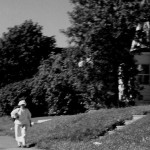Park Point Park cabin?
On the hiking trail at the end of Park Point, there’s an old cabin on the harbor side. Does anyone know the story behind this cabin? I read that there used to be several “settlers cabins,” perhaps this is the one remaining settler cabin? I can also of course speculate about blacklisted Finnish bachelors, but I suspect folk on PDD know the real story.
Recommended Links:
Leave a Comment
Only registered members can post a comment , Login / Register Here












57 Comments
digit3
about 15 years agoBret
about 15 years agovicarious
about 15 years agoTony D.
about 15 years agoginger
about 15 years agoBret
about 15 years agoPaul Lundgren
about 15 years agoPaul Lundgren
about 15 years agoTony D.
about 15 years agoBret
about 15 years agoTony D.
about 15 years agojj
about 15 years agoThe Big E
about 15 years agoTony D.
about 15 years agoCharlie
about 15 years agozra
about 15 years agoGTR
about 15 years agocjedin
about 15 years agoTony D.
about 15 years agorediguana
about 15 years agowildreed
about 15 years agoPaul Lundgren
about 15 years agoTony D.
about 15 years agoThe Big E
about 15 years agoThe Big E
about 15 years agoBret
about 15 years agoberyl john-knudson
about 15 years agoPaul Lundgren
about 15 years agoLaurie DeGrio Mattson
about 15 years agoTony D.
about 15 years agoLaurie DeGrio Mattson
about 15 years agoLaurie DeGrio Mattson
about 15 years agoTony D.
about 15 years agoSandy Petersen
about 15 years agoLaurie DeGrio Mattson
about 15 years agoginger
about 15 years agoSandy Petersen
about 15 years agoTom
about 15 years agoEd Pollock
about 14 years agoTony D.
about 14 years agoEd Pollack
about 14 years agoBrian
about 14 years agoKim
about 14 years agoTony D.
about 14 years agoBret
about 14 years agosteve kemp
about 14 years agosteve kemp
about 14 years agoE. Dahl
about 14 years agoc davey
about 14 years agoBret
about 14 years agowildknits
about 14 years agoJan Olson
about 14 years agoChad
about 14 years agoDenise
about 14 years agoSteve
about 14 years agoScott Fletcher
about 13 years agornarum
about 13 years ago